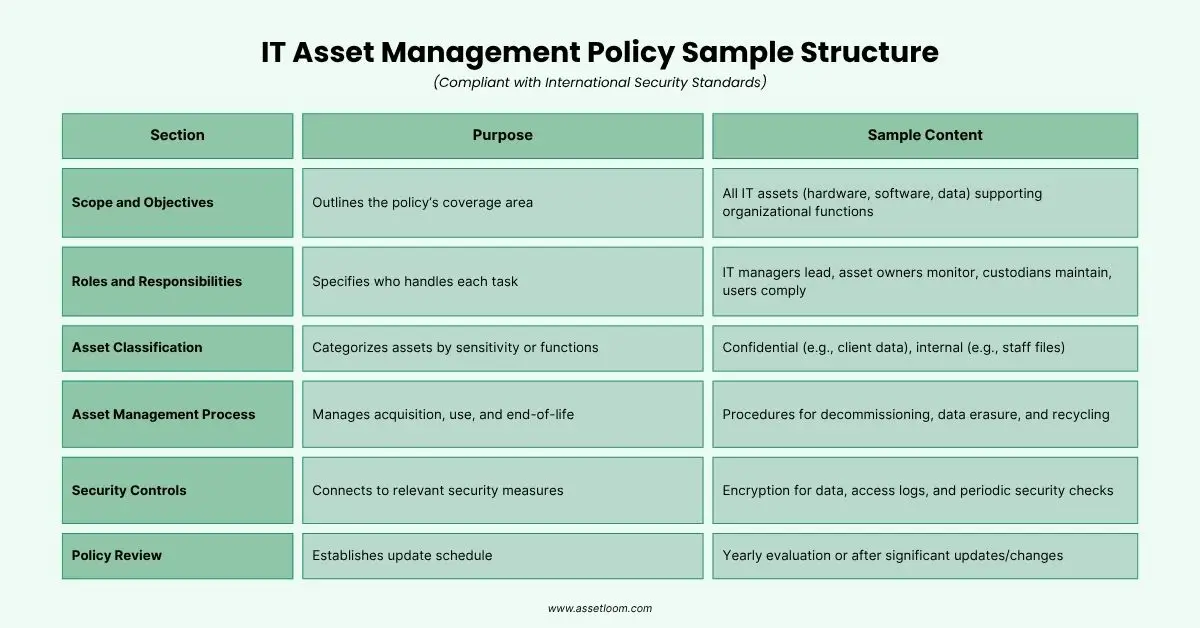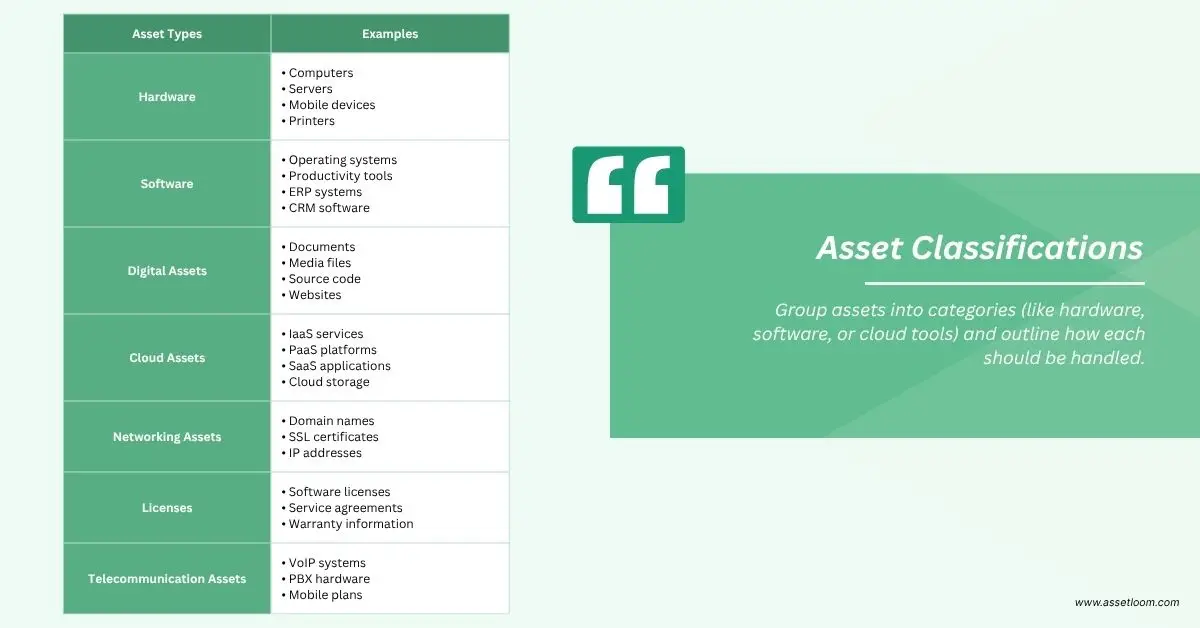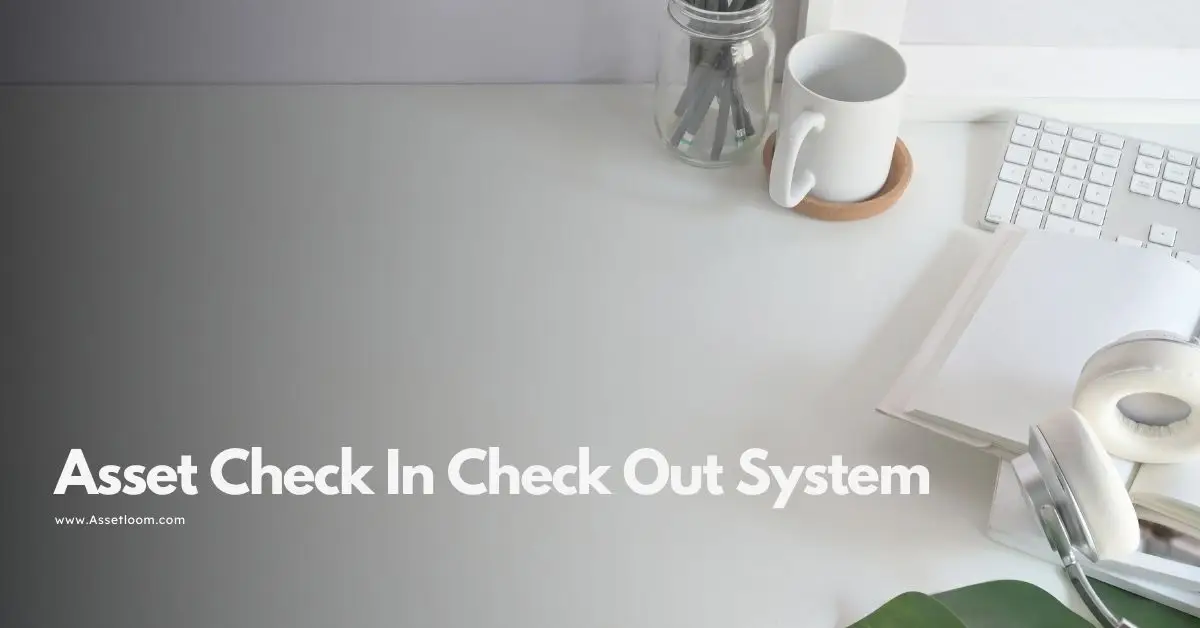IT Asset Lifecycle Management Policy Template [Free Download]
Learn how to create a good IT asset lifecycle management policy template with our instructions and free download.
An IT asset lifecycle management policy template is something that organizations, big or small, should take seriously.
Everything nowadays is related to technology - even right now, you're probably reading this article on your phone or your tablet. These IT assets are too important to ignore; we need to manage them properly, knowing where they are and how they're performing.
This becomes even more important when you're running a business, where every part of the workflow relies on these IT assets. At that point, managing IT assets effectively isn't just a good practice — it's essential. Whether you're part of a small team or a large organization, having a clear approach to managing IT assets throughout their lifecycle can make a big difference. It helps reduce costs, meet compliance requirements, and keep things running smoothly.
Building an IT asset lifecycle management policy might contribute to the success of this journey. A proper IT asset lifecycle management policy template provides a structured approach to overseeing the acquisition, use, maintenance, and disposal of IT assets.
Let’s explore what this policy entails, why it’s necessary, its key components, and how to customize a free template to suit your business needs.
What Is an IT Asset Lifecycle Management Policy Template?
An IT asset lifecycle management policy template is a formalized document that outlines the processes and procedures for managing IT assets throughout their lifecycle. This includes hardware (e.g., computers, servers, and networking equipment), software (e.g., applications and licenses), and other technology-related resources. The policy governs each stage of an asset’s lifecycle, from procurement to disposal, ensuring compliance, cost efficiency, and security.
The lifecycle typically includes the following stages:
- Planning: Identifying the need for an IT asset based on organizational goals.
- Acquisition: Purchasing or leasing assets, including vendor selection and contract negotiation.
- Deployment: Installing and configuring assets for use within the organization.
- Maintenance: Regular updates, repairs, and monitoring to ensure optimal performance.
- Decommissioning: Retiring or disposing of assets securely when they are no longer needed.
Related article: What Is IT Asset Lifecycle Management?
More specifically, this policy serves as a roadmap for IT teams, finance departments, and other stakeholders to align asset management with business objectives. By implementing a clear policy, organizations can avoid mismanagement, reduce downtime, and ensure compliance with regulations like GDPR, HIPAA, or ISO 27001.
Why You Need a Lifecycle Management Policy
An IT asset lifecycle management policy focuses on managing those assets over time to keep things organized, secure, and cost-effective. It makes sure everyone is on the same page. For what it’s worth, putting one in place to:
- Save Money: You can avoid unnecessary purchases and make the most of what you already have.
- Stay Compliant: A policy helps you meet legal, regulatory, and audit requirements.
- See Everything Clearly: Know exactly what assets you have, where they are, and who's using them.
- Boost Security: Reduce risks by setting clear steps for secure disposal and data wiping.
- Work More Efficiently: Streamline processes like assigning devices or scheduling maintenance.
A good policy also promotes better coordination across departments, helping everyone work more effectively.
Key Components of a Good IT Asset Lifecycle Management Policy Template
Your IT asset management policy template should clearly outline asset classification, ownership, lifecycle management, and protection responsibilities. Based on ISO 27001-aligned best practices, a well-rounded IT asset lifecycle management policy template should include the following sections:

1. Objectives and Scope
Clearly define the purpose of the policy and the types of assets it covers (e.g., hardware, software, cloud-based assets). Specify the policy’s goals, such as cost reduction, compliance, or security enhancement.
2. Roles and Responsibilities
List who is responsible for what. For example, specify who is responsible for approving purchases, tracking assets, or conducting audits.
3. Asset Classification
Group assets into categories (like hardware, software, or cloud tools) and outline how each should be handled. This section should detail how assets are tagged, tracked (e.g., via asset management software), and audited to prevent loss or theft.

4. Asset Management Process
Outline how assets are acquired, used, and eventually disposed of.
5. Security Controls
Link the policy to security measures like encryption, access logs, and monitoring tools.
6. Policy Review
Sets how frequently the policy should be reviewed, typically annually or after major changes.
Download Your Free IT Asset Lifecycle Management Policy Template (PDF)
To help you get started, we've created a free IT Asset Lifecycle Management Policy Template that includes all the sections mentioned above. It's easy to edit and can be adapted to fit your organization, no matter the size.
Download Free Template HereThe template includes:
- Ready-to-use policy sections
- Editable fields for your company name, departments, and key roles
- Helpful notes to guide your customization
Whether you're building a policy from scratch or improving an existing one, this template offers a solid starting point.
How to Customize the Template for Your Business
Every organization is different, so it's important to tailor the template to fit your specific needs. Here are some tips:
- Connect to Business Goals: Make sure the policy supports your overall goals, like saving money or improving compliance.
- Get Input from Teams: Work with IT, finance, HR, and legal to make sure the policy reflects everyone's needs.
- Keep It Simple: Use clear, straightforward language so everyone can understand and follow the policy.
- Use ITAM Tools: Platforms like AssetLoom can help automate asset tracking and make sure your policy is followed.
- Train Your Team: Offer training so everyone knows their role in managing IT assets.
- Review Regularly: Set a schedule to review and update the policy as your business and technology needs change.
By customizing the policy, you make it a useful tool that supports your operations, not just a document to file away.
Conclusion
A good IT asset lifecycle management policy template is a key part of running secure, efficient, and cost-effective IT operations. With a clear policy in place, you can stay organized, reduce waste, and stay ahead of compliance requirements.
Download our free PDF template to get started today. It’s a practical step toward better IT asset management. And if you're ready to take things further, AssetLoom can help you automate and scale your lifecycle management processes.
Start now by downloading the template and building a stronger IT asset strategy.

Subscribe for Expert Tips and Updates
Receive the latest news from AssetLoom, right in your inbox.


